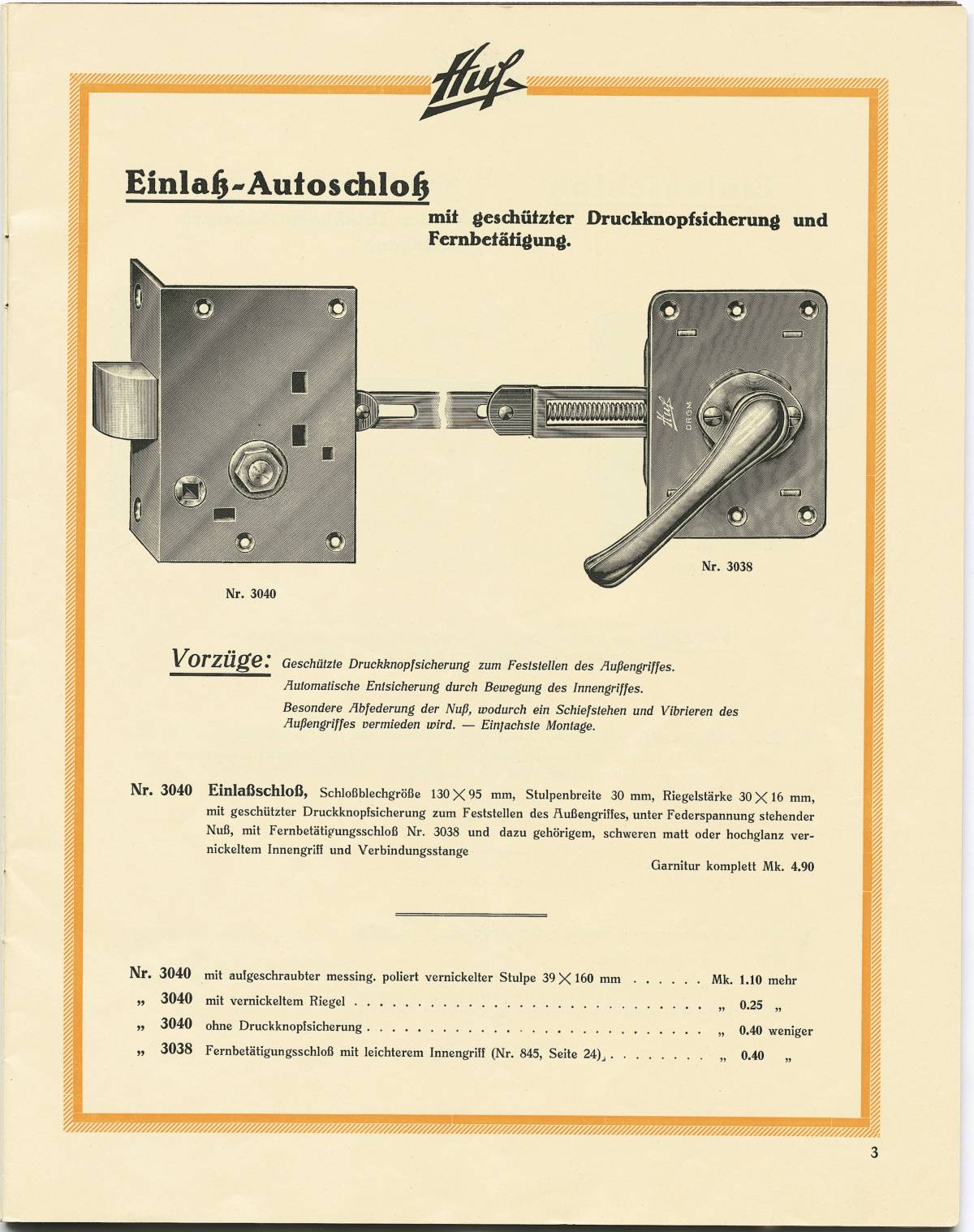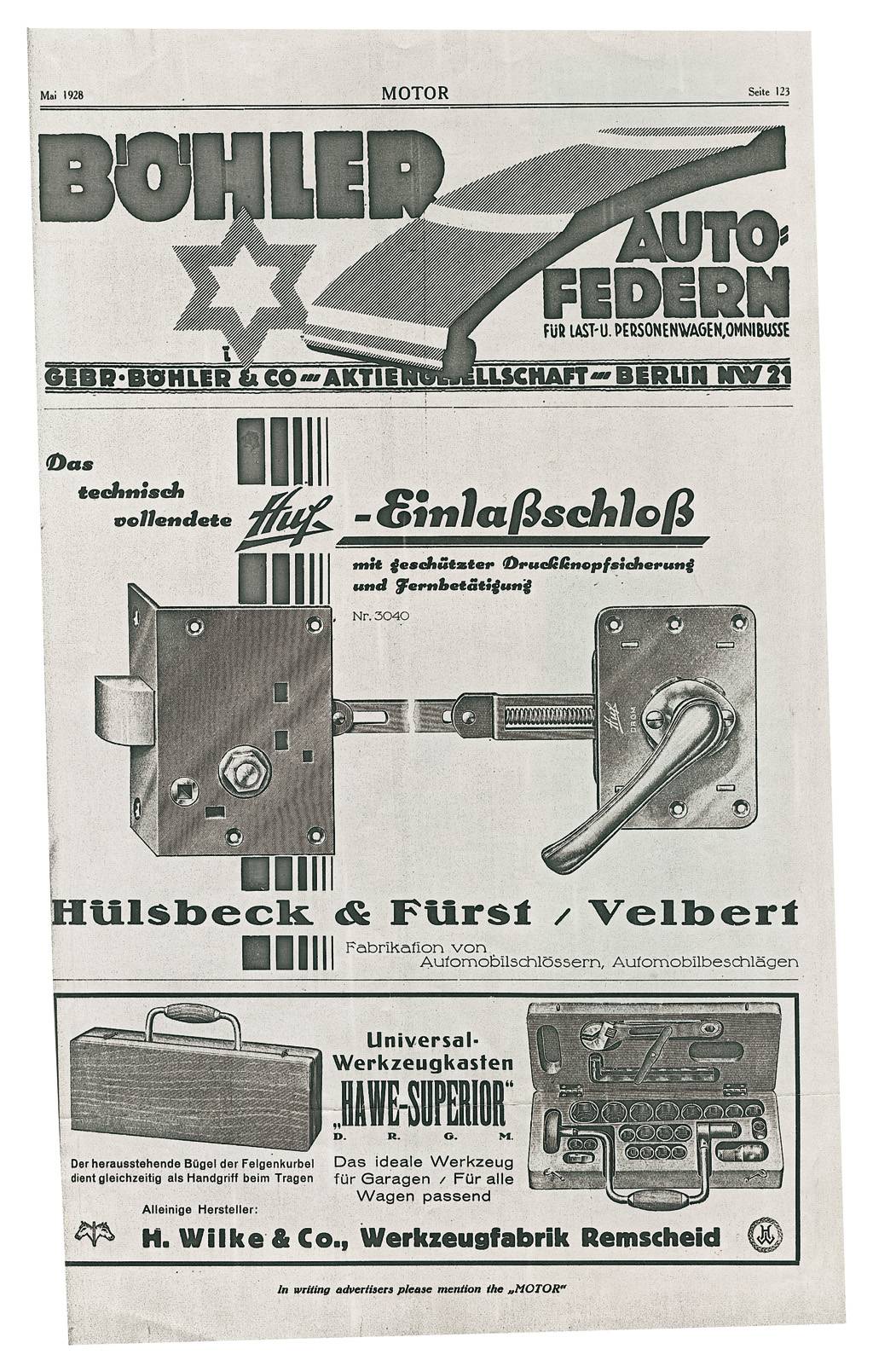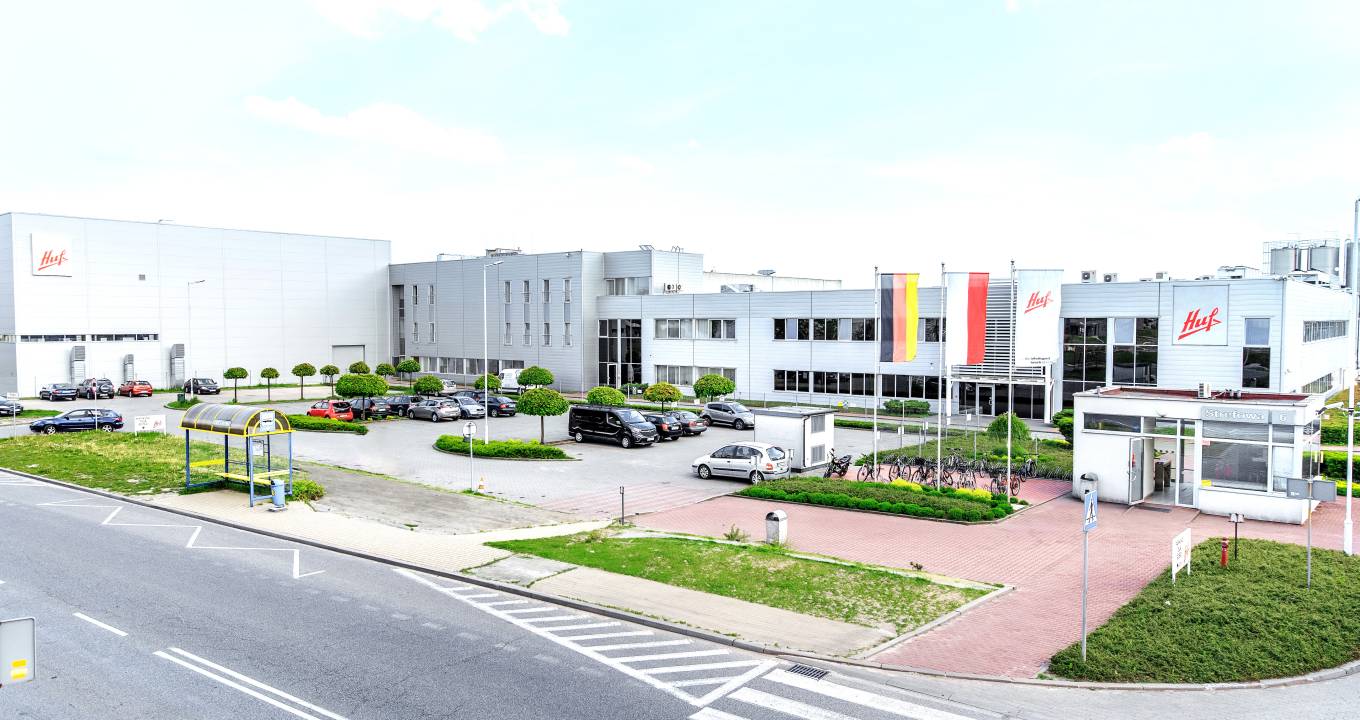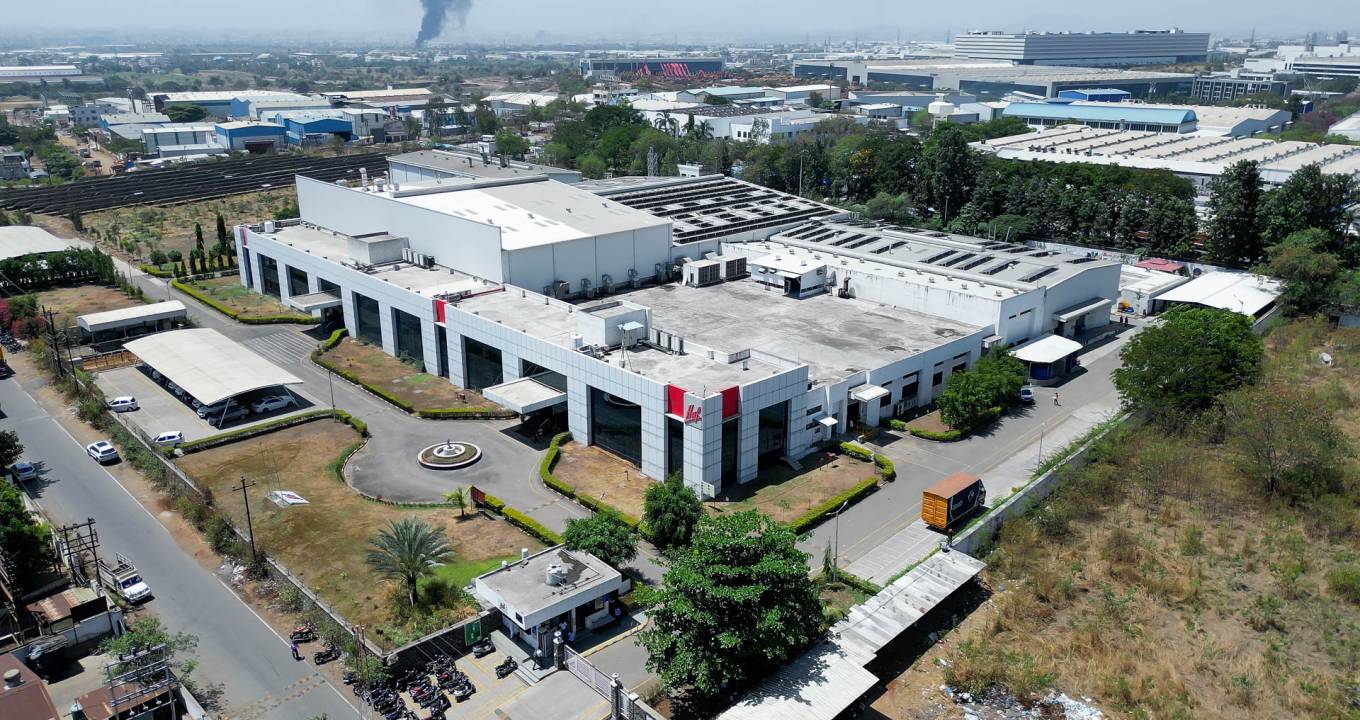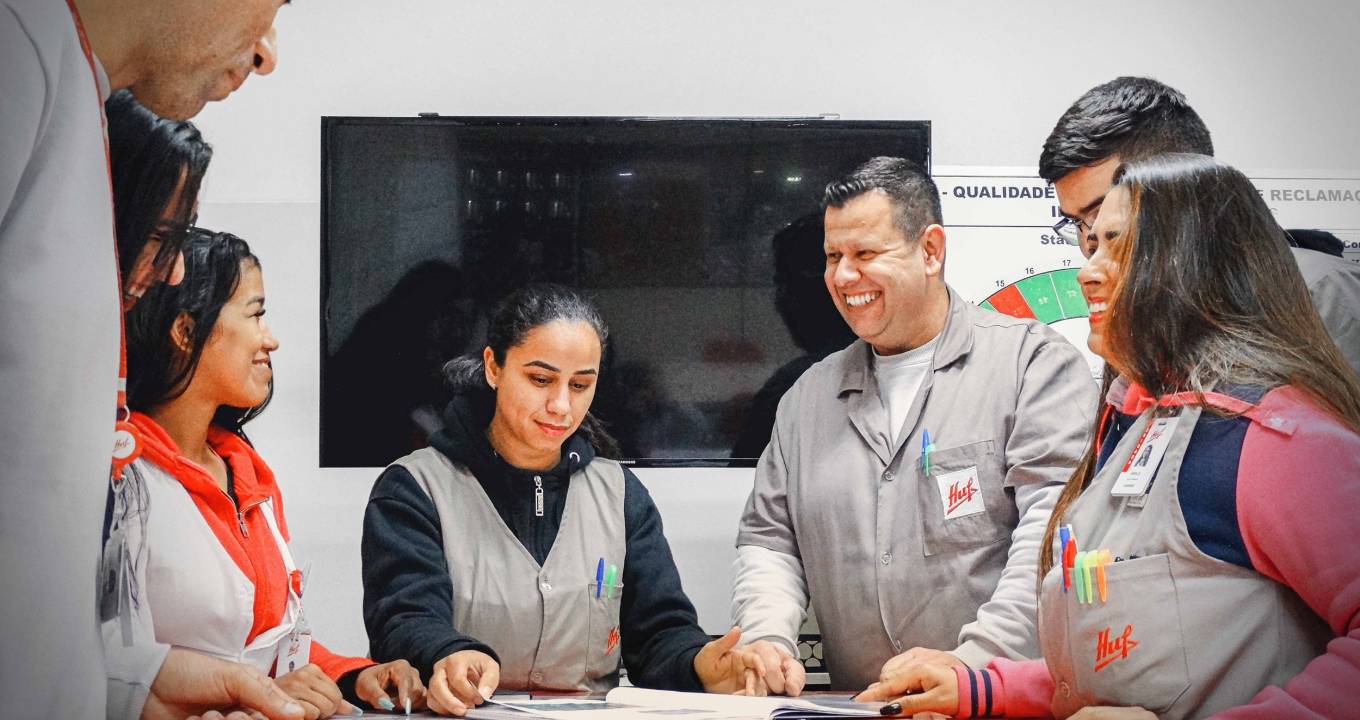Today, Huf supplies almost all automotive manufacturers worldwide and is the leading specialist for secure car access and authorization. The way to success: always focusing on customers and their needs while playing a key role in shaping the market for secure car access and authorization systems.
On June 17, 1908, Ernst Hülsbeck and August Fürst founded Hülsbeck & Fürst GmbH and moved into a 200-square-meter workshop in the center of Velbert. Here, the small company made locks and keys for the furniture industry – from huge wall closets to sophisticated glass cabinets. Huf quickly established a reputation as a reliable supplier of high-quality products and rapidly developed a sound customer base. In 1911, the company moved into the first factory of its own with 25 employees. A 450-square-meter new building provided capacity for further orders in the spring of 1920. However, these orders no longer came from the furniture industry alone.
Huf is in the middle of the rise of the automobile
Ernst Hülsbeck and August Fürst identified the need for secure locks for the automobile as an up-and-coming means of transportation. It was a logical step to offer them to the inventor of the automobile directly: In 1920, Mercedes was looking for a luxurious lock that would satisfy the demanding customers for its high-end vehicles built by hand in small series production. Huf met the requirements with a high-quality lock that impressed with its great reliability, thus laying the foundation for a fruitful cooperation with Mercedes that has lasted for more than 100 years now.
In the early 1920s, Huf was still able to fulfill the orders for Mercedes with the same machines that were also used to make locks for furniture. But demand soon started to increase. When Henry Ford invented the assembly line, he made cars affordable to broader social classes. Other manufacturers followed quickly. Opel was the first German manufacturer to take up the example set by the Americans: The Opel 4 PS, affectionately called “tree frog” because of its green paintwork, was the first German car to roll off an assembly line in 1924, presenting suppliers with the challenge of processing large orders in a short space of time.
Huf supplied all Ford models in Germany from 1931 onwards
Huf applied its experience in the furniture industry, which the company had been supplying with large volumes since its foundation. Huf soon made a name for itself as a reliable partner and accompanied the rapidly progressing motorization of the country. In 1931, the Ford Motor Company opened up its first European plant in the Niehl district of Cologne and commissioned Huf to develop new products.
From then on, Huf provided not only locking systems for all Ford models, but also made lettering, emblems, and trim strips for all of the brand’s German models. As a lock specialist, Huf also supplied the Volkswagen plant, founded in 1938, and thus became the leading supplier in this area in the 1930s. The Second World War brought this development to a sudden end. Huf was forced to convert its production to war materials.
The millionth VW Beetle fitted with door handles from Huf
In spite of the dismantling by the victorious countries, Huf quickly got back on track after the Second World War and supplied almost all locking systems, door handles and fittings to Volkswagen, Ford, Daimler-Benz, and Opel. In 1955, the millionth VW Beetle rolled off the line. Like the Beetles before, this anniversary car was also equipped with door handles from Huf. A true highlight in the Huf history. Huf also supplied other iconic vehicles of the 1950s, such as the BMW Isetta and the luxurious BMW 205/502, the first of the brand’s vehicles to cause a sensation with its powerful eight-cylinder engine.
Daimler-Benz also continued to rely on quality products from Huf. One example is the famous Mercedes 180 D (W 120): The sedan was the brand’s first high volume car model with a unibody construction and diesel engine. As a taxi, this model would become a familiar sight on the streets in post-war Germany just like the Beetle. For decades, almost every taxi driver had a Huf key in the pocket and pulled on a Huf handle to open the door to the passenger compartment for the guests.

